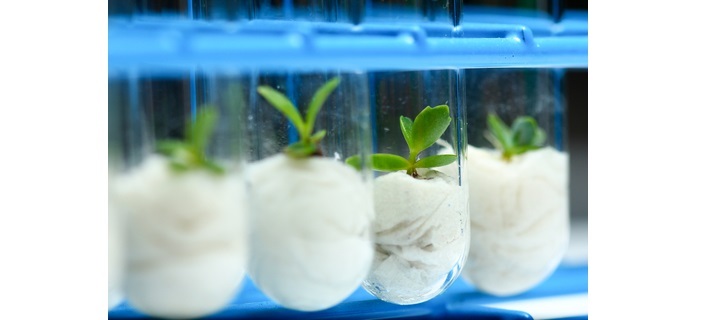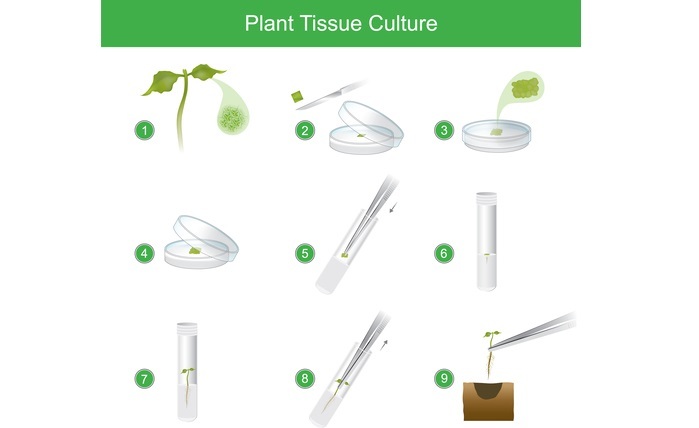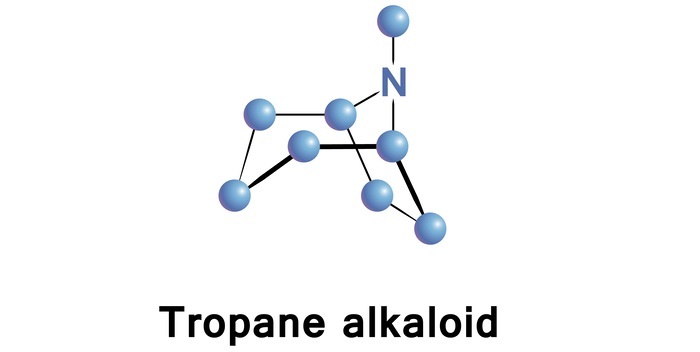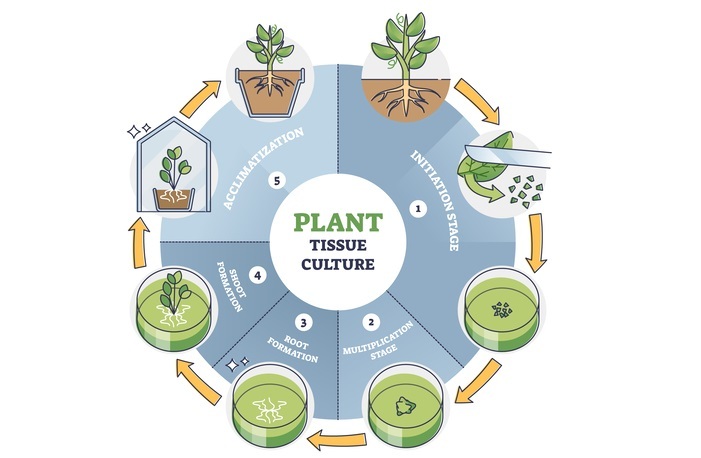
 Data Structure
Data Structure Networking
Networking RDBMS
RDBMS Operating System
Operating System Java
Java MS Excel
MS Excel iOS
iOS HTML
HTML CSS
CSS Android
Android Python
Python C Programming
C Programming C++
C++ C#
C# MongoDB
MongoDB MySQL
MySQL Javascript
Javascript PHP
PHP
- Selected Reading
- UPSC IAS Exams Notes
- Developer's Best Practices
- Questions and Answers
- Effective Resume Writing
- HR Interview Questions
- Computer Glossary
- Who is Who
Production of Secondary Metabolites by Plant Tissue Culture
Introduction
Plant tissue culture is a widely used technique in the production of secondary metabolites. Secondary metabolites are organic compounds that are not essential for the survival of the plant but play important roles in plant defence mechanisms, as well as in the treatment of diseases in humans.

Secondary metabolites can be classified into several groups such as alkaloids, flavonoids, terpenoids, and phenolic compounds, among others. Plant tissue culture is a technique that involves the in vitro growth of plant cells, tissues, or organs under controlled conditions.
This technique has been widely used in the production of secondary metabolites due to its ability to provide a controlled environment for plant growth and development.
Plant Tissue Culture
Plant tissue culture involves the use of sterile techniques to isolate plant cells, tissues, or organs and grow them under controlled conditions in the laboratory. The plant material is first sterilized using a combination of chemical and physical methods to remove any microorganisms that may be present on the surface of the plant.
The sterilized plant material is then placed in a culture medium that contains the necessary nutrients and growth hormones for the plant to grow and develop.
Plant tissue culture can be used to propagate plants, regenerate plants from single cells, and produce secondary metabolites. In the production of secondary metabolites, the plant material is grown under controlled conditions that allow for the production of specific secondary metabolites.

Advantages of Plant Tissue Culture
Plant tissue culture has several advantages over traditional methods of plant cultivation. One of the major advantages is the ability to produce large quantities of plant material in a relatively small space. This makes it possible to produce large quantities of secondary metabolites without the need for extensive land use.
Another advantage of plant tissue culture is the ability to produce plant material that is genetically identical to the parent plant. This ensures that the secondary metabolites produced by the plant are of a consistent quality and composition. Additionally, plant tissue culture allows for the production of plant material that is free from contaminants such as pathogens and pesticides.
The use of plant tissue culture in the production of secondary metabolites also allows for the production of rare and endangered plant species. Many plants that produce secondary metabolites are rare or endangered, and the use of traditional methods of plant cultivation may further endanger these plants.
Secondary Metabolites
Secondary metabolites are organic compounds that are not essential for the survival of the plant but play important roles in plant defence mechanisms, as well as in the treatment of diseases in humans.
Secondary metabolites can be classified into several groups such as alkaloids, flavonoids, terpenoids, and phenolic compounds, among others.

Alkaloids: Alkaloids are nitrogen-containing compounds that have a wide range of biological activities, including anti-inflammatory, anti-cancer, and anti-microbial activities. Examples of alkaloids include caffeine, nicotine, and morphine.
Flavonoids: Flavonoids have a wide range of biological activities, including anti-inflammatory, anti-cancer, and anti-microbial activities. Flavonoids are also responsible for the colour of many flowers and fruits. Examples of flavonoids include quercetin, kaempferol, and apigenin.
Terpenoids: Terpenoids have a wide range of biological activities, including anti-inflammatory, anticancer, and anti-microbial activities.
Phenolic Compounds: are a group of secondary metabolites that are widely distributed in the plant kingdom. Phenolic compounds have a wide range of biological activities, including anti-inflammatory, anti-cancer, and anti-microbial activities. Examples of phenolic compounds include quercetin, resveratrol, and ellagic acid.
Production of Secondary Metabolites by Plant Tissue Culture
Plant tissue culture can be used to produce large quantities of secondary metabolites in a controlled environment. The production of secondary metabolites by plant tissue culture involves several steps.
Selection of Plant Material
The first step in the production of secondary metabolites by plant tissue culture is the selection of plant material. The plant material should be selected based on its ability to produce the desired secondary metabolite. The plant material should also be free from contaminants such as pathogens and pesticides.
Initiation of Culture
The selected plant material is then sterilized and placed in a culture medium that contains the necessary nutrients and growth hormones for the plant to grow and develop. The culture medium should also contain specific additives that promote the production of the desired secondary metabolite.

Growth and Development
The plant material is then grown and developed under controlled conditions that promote the production of the desired secondary metabolite. The growth and development of the plant material can be controlled by adjusting the environmental conditions such as temperature, light intensity, and humidity.
Harvesting
Once the plant material has reached the desired growth and development stage, it is harvested and processed to extract the secondary metabolite. The extraction process may involve several steps such as solvent extraction, steam distillation, or chromatography.
Applications of Secondary Metabolites
Secondary metabolites have several applications in the pharmaceutical, food, and cosmetic industries. Many secondary metabolites have been found to have anti-inflammatory, anti-cancer, and anti-microbial activities. Secondary metabolites have also been used in the treatment of several diseases such as cancer, diabetes, and Alzheimer's disease.
Food Industry
Secondary metabolites are used as food additives and preservatives. Many secondary metabolites have antioxidant properties that help to prevent the oxidation of food components. Secondary metabolites are also responsible for the flavour and aroma of many foods.
Cosmetic Industry
Secondary metabolites are used as active ingredients in many cosmetic products. Many secondary metabolites have anti-inflammatory and anti-oxidant properties that help to reduce skin inflammation and prevent skin aging.
Conclusion
Plant tissue culture is a widely used technique in the production of secondary metabolites. The production of secondary metabolites by plant tissue culture involves the use of sterile techniques to isolate plant cells, tissues, or organs and grow them under controlled conditions in the laboratory.
Secondary metabolites are organic compounds that are not essential for the survival of the plant but play important roles in plant defence mechanisms, as well as in the treatment of diseases in humans.

